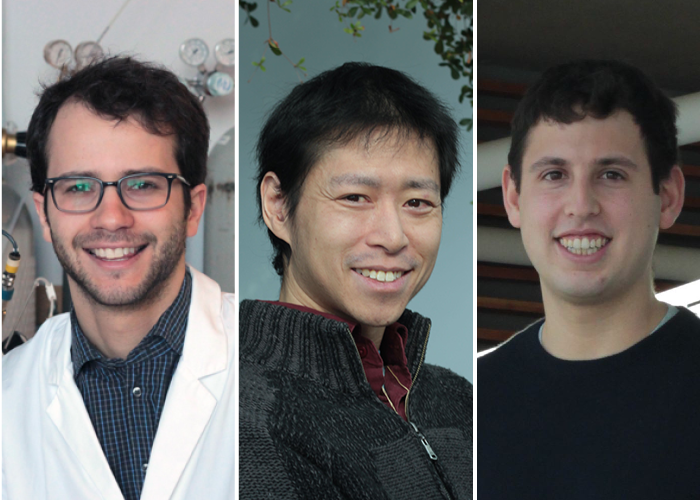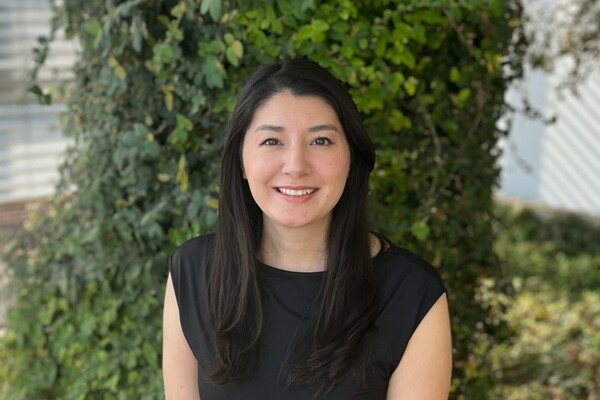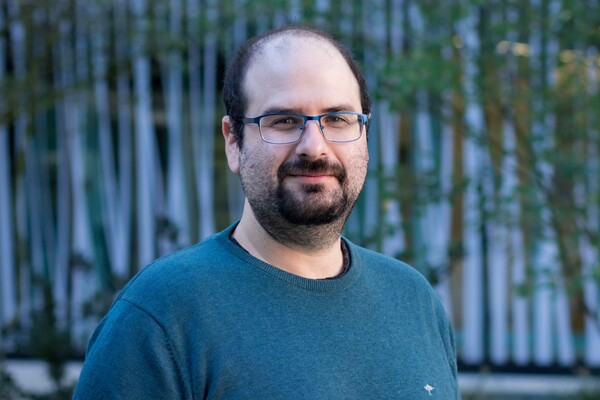Main Second Level Navigation
Winners of the Jennifer Dorrington Graduate Research Award Announced

It’s not often that a graduate student develops a diagnostic test, which can accurately predict outcome in patients with leukemia, and which could soon become a staple tool in the clinic. But then again, Stanley Wai-Kwong Ng is not an ordinary student. A graduate of computer and electrical engineering, Ng came into cancer research as a novice— and took it by storm. He is one of the three recipients of the 2017 Jennifer Dorrington Doctoral Research Award, awarded annually to outstanding students in U of T’s Faculty of Medicine, who are doing research in the Donnelly Centre, which he shares with Yonatan Lipsitz and Samuel Lambert.
“It’s an honour to receive this award. I read that Dr. Dorrington died of cancer, so this award is very meaningful to me as my primary motivation for contributing to cancer research is to directly impact and improve patient survival,” says Ng, who joined University Professor Peter Zandstra’s group after graduating from McMaster University four years ago.
Ng’s background in machine learning equipped him with the know-how for detecting subtle patterns in big data. This allowed him to effectively apply a statistical learning algorithm to derive a formula and develop an assay that can rapidly—within 24 to 48 hours—predict clinical outcome in patients with acute myeloid leukemia (AML). Based on gene expression profiling of rare leukemia stem cells (LSC) in patient blood or bone marrow, the test, known as the LSC17 score, estimates precision prognosis, including overall survival, time to relapse, and how likely the patient is to respond to drugs. Because AML is an aggressive blood cancer that progresses quickly, patients usually start chemotherapy soon after diagnosis, while typically waiting several weeks before tests results come back to reveal patient risk and help doctors decide on the best course of further treatment. Ng’s work, which was done in close collaboration with Drs. John Dick, Jean Wang, and Mark Minden at the Princess Margaret (PM) Cancer Centre, could vastly cut the time it takes to accurately rank patients according to their risk, and choose the right treatment, early in the disease. It also netted the team a high-profile research paper in a prestigious journal Nature, with Ng as a lead author.
Within a few years, clinicians may start using the test that Ng helped develop. To make this happen, Ng has put in place a computational workflow and helped to implement the LSC17 assay in the advanced molecular diagnostics lab at PM to calculate individual patient risk scores. A clinical trial is being planned, which could start as early as the end of the year, while testing of LSC17 may also extend to other centres in Canada and abroad. While he plans to continue working in cancer research by securing a postdoctoral position some time next year, Ng’s ongoing efforts will include working closely with the clinic to maximize successful clinical integration of the LSC17 score. “I want to make sure that what I helped to create works in the real world and is helping patients,” says Ng.
Like Ng, Lipsitz came to biomedical research from another field. After graduating in chemical engineering from McGill University, Lipsitz was interested in applying his chemical processing knowledge to some of the key challenges in regenerative medicine—production of large quantities of human cells for future cell therapies.
Lipsitz is also a member of the Zandstra lab, where scientists have been developing new technologies aimed at bringing stem cell discoveries to patients. Stem cells are pluripotent, which means that they can give rise to any cell type in the body, and could be used to create replacement tissues and organs to treat a host of diseases. However, scaling up laboratory science to efficiently grow the billions of cells required to treat large patient populations poses unique challenges.
“Peter’s lab applies core chemical engineering to biological systems using cutting-edge technologies to overcome the challenges of the scale up process. For example, we are engineering pluripotent stem cells to boost their ability to expand in manufacturing systems,” says Lipsitz.
For Lipsitz, who joined the Zandstra lab five years ago, the timing could not have been better. The last few years have seen a push in Canada and Toronto towards translation of stem cell science into therapies, in which Zandstra plays a key role as co-founder of the Centre for Commercialization of Regenerative Medicine and director of U of T’s Medicine by Design.
“I am very excited about seeing these therapies curing patients,” says Lipsitz who is eyeing a career in the biotech sector after completing his PhD. “I want to be part of making cell therapies accessible to patients”. Lipsitz is already becoming involved in the regenerative medicine community in Toronto. Last month, he and a team of U of T scientists and entrepreneurs identified key bottlenecks in stem cell commercialization and presented their findings to a panel of industry experts.
While the focus of Ng and Lipsitz’s research has been to improve patients’ lives, Lambert has been grappling with a more fundamental question in biology, at the core of understanding life in all its forms.
After graduating in biology from the University of Guelph, Lambert joined Professor Timothy Hughes’ group, which is among world-leading in studying how cells read the genome. Each cell in the human body contains the exact same genetic information, yet brain cells are very different from heart cells, which are again different from, say, cells that make up the liver. What makes one cell different from another is a set of genes that is switched on at any given time. In fact, all biological processes, from intricate patterning of butterfly wings to foetal development, are underpinned by the right genes being switched on in the right cells at the right time. When this process breaks down, it can lead to disease.
During his PhD, Lambert has been studying proteins called transcription factors (TFs), which bind DNA to turn genes on or off. TFs do this by triggering or halting, respectively, the transcription of genes' sequences into instructions for making proteins, the building blocks of life. TFs recognize specific landing sequences in the DNA, and Lambert’s project focused on finding the diversity of sites for TFs in different organisms. Contrary to previous thinking, Lambert found that similar TFs from closely related species often recognize different sites in DNA. He then showed that the same is true across the tree of life suggesting that TF binding differences may be part of the driving force behind evolution.
This is Lambert’s second Dorrington Research Award, having first received it while he was a Master’s student. “With the generous support from the Dorrington family, I continued my research in what I think is one of the most fascinating questions in biology. The hope is that if we can understand how cells normally perform these functions we’d have a better clue at how to fix it when it goes awry in disease,” says Lambert.
Expecting to graduate in less than five years from starting his PhD, Lambert is planning his next move. “For my postdoc, I would like to join a lab where I can combine what I’ve learned about gene transcription in my PhD with human genetics to better predict our risk for disease,” he says.
The award was established by the Dorrington family in 2006 as a tribute to Dr. Jennifer Dorrington, who was a professor in the Banting and Best Department of Medical Research. Dorrington’s pioneering research greatly advanced our understanding of reproductive biology and ovarian cancer.
News



